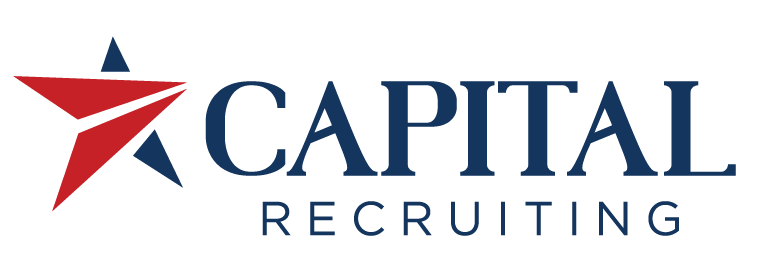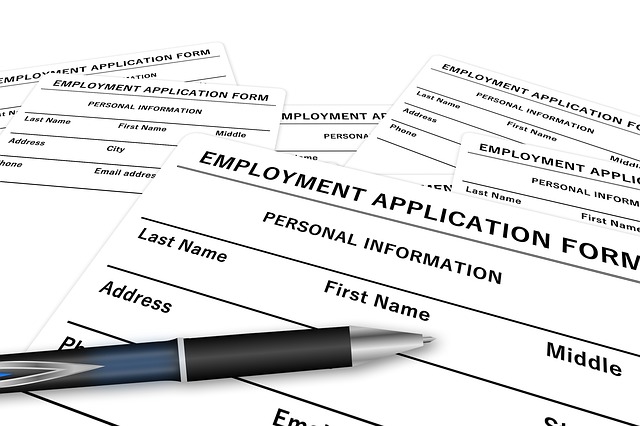
Cover Letters: Ain’t Nobody Have Time for That
January 28, 2021
Sending a Post-Interview Thank-You Email: Why It’s Important and How to Send the Perfect One
February 8, 2021Having an amazing resume is a pivotal first step to landing a great job. Of course, you know that already since every single recruiter is screaming this to you on a daily basis. But what you might not realize is that the format for a resume plays a crucial element. In fact, I’d go as far as to say that it’s just as significant as the content itself.
With that said, there are different ways of laying out the format for a resume so be mindful of the benefits associated with each. The format you choose will depend greatly on your background and how much experience you have in the IT industry. Always remember that the goal behind a resume is to prove to a potential employer that you’re qualified enough to get called in for an interview.
This blog post will show you how to layout the format for a resume in a way that gives you the best chance of landing the job.
What Makes the Format of a Resume so Important?
Resumes are the most deceptive document ever devised. As a result, so many people get it wrong. That’s why resume writing services are in such high demand. But that’s good news because if you get it right, then you’ll have an extremely high chance of making the shortlist.
Put yourself into the shoes of an interviewer. They spend hours slogging through bad resumes and finally come across a good one that stands out. At that moment, the interviewer is weeping internally as they have finally come across a well-written resume. Okay, maybe that’s an exaggeration. But what’s not an exaggeration is a resume that stands out is almost guaranteed to be put on the short stack.
The format for a resume is essential to grabbing the attention of an interviewer, which is its main purpose. Think of a resume as the gatekeeper for the interview process. While the job interview is what will make or break the application, individuals with a poorly formatted resume are not likely to even have the opportunity.
Important Information Specific to the IT Industry
Before we dive deep into the specifics of resume formatting, I want to touch on an important topic when it comes to education. In the IT industry, tech-specific certifications (AWS, Microsoft, Com Tia, Cisco, etc.) are far more valuable than general educational degrees. I’m not saying that you shouldn’t add your full educational background, but many companies prefer field-specific certifications over degrees.
In fact, this study found that an overwhelming 91% of employers prefer IT certifications when selecting employees. The reason is that a certification verifies that the candidate possesses detailed knowledge and experience in the related field. It plays a huge role in getting hired so be absolutely sure you list any related certifications under the educational section of your resume.
Three Most Popular Formats for a Resume
The type of resume you write will depend on your background, experience, and the type of job you’re trying to get. For instance, an individual who has been with the same company their whole life will have fewer previous jobs to fill in the blank space. Therefore, they would focus more on showcasing their experience within that one company. This would be different than an applicant who’s worked for multiple companies within that same timeframe.
With that said, here’s a comprehensive look at the three major formats for a resume.
Chronological Format of a Resume
This is the most recognized resume format and the most popular choice. In its most basic form, chronological resumes list job experience in descending order. For instance, under the education section of the resume, the applicant would list their master’s degree above their bachelor’s degree since it’s the descending order in which they were earned. The same is true of previous jobs. In short, always list more recent items first.
With that in mind, here is the exact layout you should use.
#1: Contact Information
This information should be at the top of your resume and will include your name, phone number, email address, address, and LinkedIn Profile. Don’t underestimate the power of having a LinkedIn profile, especially in the IT industry.
#2: Previous Job Experience
In most cases, resumes will list job experience in order starting with the most recent job. Each listing needs to be consistent and should include the company name, location, job title, and the dates you worked at the job. You should also list tasks at each job that relate to your current application.
#3: Education
Employers want to know that you meet their educational requirements so make sure this is formatted correctly. List the name of the college/university you attended, its location, the exact name of the degree, and the years you attended.
NOTE: You do not have to list high school education since most IT positions require college level or higher. Make sure you list all certifications here as well.
Education should be listed below job experience unless the job position places huge emphasis on education or your level of education is higher than your job experience. When in doubt, list your job experience first.
Functional Format of a Resume
The next format for your resume is functional and it’s reserved for use by individuals whose job experience will not be reflected as highly by the traditional chronological format. A functional resume puts more emphasis on accomplishments than actual job experience.
Applicants will need to use a functional format if they have large gaps in their work history or if they don’t have enough job experience to fill in the blank areas. Some job recruiters absolutely hate this format though since it tends to list skills and qualifications out of context. This format is used quite sparingly and only in extreme cases when it makes sense.
Here’s the layout of a functional resume.
#1: Contact Information
This information always goes at the top of a resume and it will include your name, phone number, email address, address, and LinkedIn Profile.
#2: List of Qualifications
Next you will pick and choose specific qualifications from all of your previous job experiences to paint a clear picture. Think about all of your previous job positions and then list everything relevant. Certifications, detailed projects, and team contributions are all fair game. If you’re going this route, then it’s essential that you make this section as appealing as possible.
#3: List of Skills
The next section includes all of the skills that you’ve developed over the course of your career. Make sure to include any skills that were learned in previous experiences and list them, along with a brief description of how they relate to the application. Since you’re going against the grain of the traditional approach, then you have to make sure your resume shines and proves enough to merit an interview.
#4: Achievements & Awards
This section includes all achievements and awards that you’ve earned throughout your career that directly relate to the job application.
#5: Previous Job Experience
This section is where you’ll list all previous jobs and since you are choosing this format, then it will be a short section. If you have a lot of previous job experience, then why are you using a functional resume format?
#6: Education
Just like in the previous resume format, list all educational experience here starting with the most recent academic achievement.
Only use a functional format if you have little to no previous job experience. Those of you who are seeking employment in the IT sector will generally want to avoid this resume format.
Hybrid Format of a Resume
I’ll be blunt. A hybrid resume will either be the best choice you’ll make, or a decision you’ll live to regret. It’s risky and must be executed flawlessly. However, hybrids have quickly become the most popular form of resume because they can be written in a way that is nearly indistinguishable from the traditional format. It takes the best of both worlds and combines them into a breathtaking format that is sure to grab the recruiter’s attention.
In the simplest terms, you can highlight accomplishments while still sticking to the traditional layout. Expert resume writers will always use this format.
#1: Contact Information
You know the drill. Include your name, phone number, email address, address, and your LinkedIn Profile at the top of the resume.
#2: Summary
This is the tricky part because the power of the hybrid resume comes in its ability to highlight a lot of information in an efficient format. Briefly describe your strongest experience and how it relates to the job application. This should be no more than two sentences. When done correctly, you don’t even need a cover letter!
#3: Job Experience
A hybrid format of a resume works in much the same way as a chronological in that it lists your previous jobs in descending order, starting with the most recent. Each job listing will include the company, location, job title, and date of employment.
However, a hybrid resume adds another element to make this section far more powerful. Under the position, write a brief one-line summary of how the experience from that specific job qualifies you for the job application.
#4: Education
Briefly list your educational qualifications just like you did with the chronological resume.
A Powerful Format for your Resume Gives you a Competitive Advantage
The key to creating the best resume is to make sure that all of your qualifications stand out. In almost every scenario, a chronologically formatted resume is going to give you the best chance of success. If you’re an expert or hire a writer, then a hybrid will make you stand out even further. Your goal is to get placed into the shortlist of resumes that will be called in for an interview.
We’re here if you need help creating the perfect format for a resume that stands out from the rest and gives you a competitive advantage.




